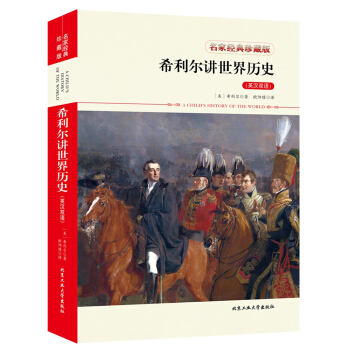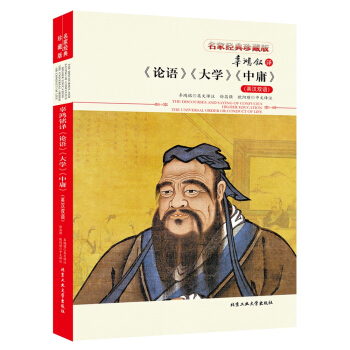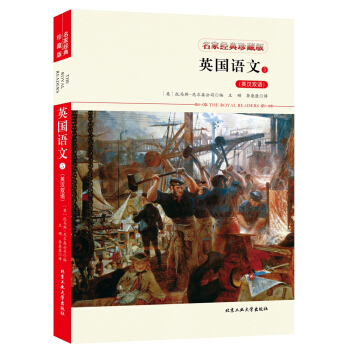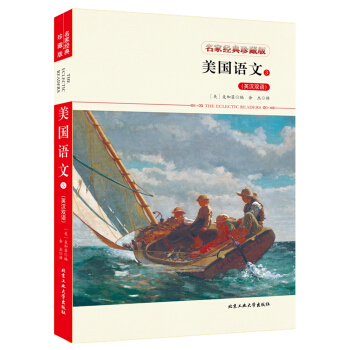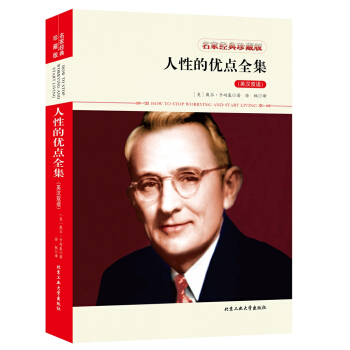

具体描述
编辑推荐
一本关于人类如何征服忧虑走向成功的书,发掘人性的优点,享受快乐的人生! 戴尔?卡耐基是誉满全球的20世纪*伟大的成功学大师和心灵导师,被尊称为“美国现代成人教育之父”。早在20世纪上半叶,当经济不景气、战争等梦魇正困扰人类时,卡耐基先生以他对人性的洞察,结合大量普通人取得成功的事例,以演讲和论著的形式唤起了无数迷惘者的斗志。在全球五大洲的50多个国家里,各种卡耐基成人教育机构多达2000多所,造就了千万余众的毕业生;他在实践基础上撰写而成的著作深受广大读者欢迎,被翻译成几十种文字流传于世界各地,是20世纪*畅销的成功励志经典。 《人性的优点》出版于1948年,是《人性的弱点》的姊妹篇。这部著作是卡耐基一生中*重要、*生动的人生经验的汇集,也是一本记录成千上万人如何摆脱心理问题走向成功的实例汇集。它是卡耐基成人教育培训机构的主要教材之一,告诉人们该如何摆脱忧虑的困扰,并指导人们如何获得快乐,享受快乐的人生。这本充满智慧和力量的书能让你了解自己、相信自己,充分开发蕴藏在身心里的尚未利用的财富,发挥人性的优点,去开拓成功幸福的新生活之路。内容简介
《人性的优点》问世于1948年。它是卡耐基一生中重要、生动的人生经验的汇集,也是一本记录成千上万人如何摆脱心理问题走向成功的实例汇集。《人性的优点》告诉人们如何摆脱忧虑的困扰,并指导人们如何获得快乐,享受快乐的人生。在这部著作中,卡耐基从战胜忧虑心理、培养快乐心情两方面,阐明了“消除错误的忧虑思想和行为,在心灵中注入快乐”的重要性;并对如何战胜忧虑心理和培养快乐心情进行了详细的阐释与说明,提出了非常具有实用价值的忠告。该书一出版,立即获得了广大读者的欢迎,成为西方世界持久的人文畅销书,被译成多种文字在全球畅销不衰,改变了千百万人的生活和命运,被誉为“克服忧虑获得成功的必读书”、“世界励志圣经”。作者简介
戴尔·卡内基(Dale Camegeie),二十世纪著名的成功学导师,著作有《语言的突破》、《人性的光辉》、《人性的弱点》、《美好的人生》等。这些书和卡耐基的成人教育实践相辅相成,将卡耐基的人生智慧传播到世界各地,影响了千千万万人的思想和心态,激发了他们对生命的无限热忱与信心,勇敢地面对与搏击现实中的困难,追求自己充实美好的人生。在卡耐基的一生中,林肯的影响非常重要。卡耐基的童年与林肯非常相似,他把林肯的奋斗历程看做是人生的经典。在卡耐基课程中,他多次提到林肯的故事,仿佛林肯就是他的一面镜子。我们从卡耐基对林肯人生的描写中,能够感受到卡耐基对林肯的崇拜之情,能够看到卡耐基理解林肯的独特视角。译者:徐枫,出版有《动物哲学》《感悟人生的113个寓言故事》,翻译作品有《福尔摩斯探案全集》、房龙《人类的故事》《圣经的故事》《宽容》、《富兰克林自传》等。精彩书评
由卡耐基开创并倡导的个人成功学,已经成为这个时代有志青年迈向成功的阶梯。通过他的传播和教导,使无数人明白了积极心态的意义,并由此改变了他们的命运。卡耐基留给我们的不仅仅是几本书和一所学校,其真正价值是:他把个人成功的技巧传授给了每一个想出人头地的年轻人。——约翰·肯尼迪(美国第35任总统)
卡耐基作品的目的就是帮助你解决你所面临的*问题:如何在日常生活、商务活动与社会交往中与人打交道,并有效地影响他人;如何克服忧虑,创造幸福美好的人生。当你解决这些问题之后,其他问题也就迎刃而解了。
——拿破仑·希尔(成功学专家、畅销书作者)
成功其实如此简单,只要遵循卡耐基先生这些简单适用的人际标准,你就能获得成功。
——马克·维克多·汉森(《心灵鸡汤》作者)
戴尔·卡耐基先生通过他的演讲和作品,教给人们一些处世的基本原则和生存之道,这是我们每个人都应该学习的人生必修课。
——博恩·崔西(美国著名成功学家、畅销书作者)
在人类出版史上,没有哪本书能像卡耐基的著作那样持久深入人心;也唯有卡耐基的书,才能在他辞世半个世纪后,还能占据我们的排行榜。
——美国《纽约时报》
目录
PREFACE How This Book Was Written—and Why序言 克服忧虑,快乐生活 1
Part One Fundamental Facts You
Should Know about Worry
第一篇 了解忧虑的基本事实
1 Live in “Day-tight Compartments” / 第1章 活在“完全独立的今天” 8
2 A Magic Formula for Solving Worry Situations / 第2章 消除忧虑的魔法
公式 19
3 What Worry May Do to You / 第3章 忧虑会使人短命 27
Part Two Basic Techniques in Analysing Worry
第二篇 分析忧虑的基本技巧
4 How to Analyse and Solve Worry Problems / 第4章 解开忧虑之谜 40
5 How to Eliminate Fifty Per Cent of Your Business Worries / 第5章 如何减少
生意上50%的忧虑 48
Part Three How to Break the Worry Habit
Before It Breaks You
第三篇 如何改变忧虑的习惯
6 How to Crowd Worry out of Your Mind / 第6章 消除思想上的忧虑 54
7 Don't Let the Beetles Get You Down / 第7章 不要为小事而垂头丧气 64
8 A Law That Will Outlaw Many of Your Worries / 第8章 平均概率可以战胜
忧虑 72
9 Co-operate with the Inevitable / 第9章 接受不可避免的事实 79
10 Put a “Stop-Loss” Order on Your Worries / 第10章 让忧虑“到此
为止” 89
11 Don't Try to Saw Sawdust / 第11章 不要锯木屑 97
Part Four Seven Ways to Cultivate A Mental Attitude
That Will Bring You Peace and Happiness
第四篇 培养平安快乐的心态
12 Eight Words That Can Transform Your Life / 第12章 态度可以改变你的
生活 104
13 The High Cost of Getting Even / 第13章 报复的代价太高了 118
14 If You Do This,You Will Never Worry About Ingratitude / 第14章 对人
施恩勿望回报 127
15 Would You Take a Million Dollars for What You Have? / 第15章 多想想
你得到的恩惠 134
16 Find Yourself and Be Yourself: Remember There Is No One Else on Earth
Like You / 第16章 保持自我本色 142
17 If You Have a Lemon, Make a Lemonade / 第17章 培养积极的心态 150
18 How to Cure Melancholy in Fourteen Days / 第18章 多替他人着想 159
Part Five How to Keep from Worrying about Criticism
第五篇 免受批评的忧虑
19 Remember That No One Ever Kicks a Dead Dog / 第19章 没有人会踢
一只死狗 176
20 Do This—and Criticism Can't Hurt You / 第20章 不要让批评伤害你 180
21 Fool Things I Have Done / 第21章 我做过的傻事 185
Part Six Six Ways to Prevent Fatigue and Worry and
Keep Your Energy and Spirits High
第六篇 常葆充沛活力的六种方法
22 How to Add One Hour a Day to Your Waking Life / 第22章 每日多清醒
一小时 192
23 What Makes You Tired—and What You Can Do About It / 第23章 是什么
使你疲劳 197
24 How The Housewife Can Avoid Fatigue—and Keep Looking Young /
第24章 青春永驻的秘诀 202
25 Four Good Working Habits That Will Help Prevent Fatigue and Worry /
第25章 养成良好的工作习惯 208
26 How to Banish the Boredom That Produces Fatigue, Worry,and Resentment /
第26章 如何消除烦闷 213
27 How to Keep from Worrying about Insomnia / 第27章 不要为失眠而
忧虑 222
Part Seven How to Find the Kind of Work in Which
You May Be Happy and Successful
第七篇 如何把握你的工作和金钱
28 The Major Decision of Your Life / 第28章 人生的重要决定 230
Part Eight How to Lessen Your Financial Worries
第八篇 如何减少金钱的烦恼
29 Seventy Per Cent of All Our Worries... / 第29章 百分之七十的烦恼 240
Part Nine “How I Conquered Worry”—32 True Stories
第九篇 克服忧虑的真实故事 / 251
精彩书摘
In the spring of 1871, a young man picked up a book and read twenty-one words that had a profound effect on his future. A medical student at the Montreal General Hospital, he was worried about passing the final examination, worried about what to do, where to go, how to build up a practice, how to make a living.The twenty-one words that this young medical student read in 1871 helped him to become the most famous physician of his generation. He organised the world-famous Johns Hopkins School of Medicine. He became Regius Professor of Medicine at Oxford—the highest honour that can be bestowed upon any medical man in the British Empire. He was knighted by the King of England. When he died, two huge volumes containing 1, 466 pages were required to tell the story of his life.
His name was Sir William Osler. Here are the twenty-one words that he read in the spring of 1871—twenty-one words from Thomas Carlyle that helped him lead a life free from worry:“Our main business is not to see what lies dimly at a distance, but to do what lies clearly at hand.”
Forty-two years later, on a soft spring night when the tulips were blooming on the campus, this man, Sir William Osler, addressed the students of Yale University. He told those Yale students that a man like himself who had been a professor in four universities and had written a popular book was supposed to have “brains of a special quality”. He declared that that was untrue. He said that his intimate friends knew that his brains were “of the most mediocre character”.
What, then, was the secret of his success? He stated that it was owing to what he called living in “day-tight compartments”. What did he mean by that? A few months before he spoke at Yale, Sir William Osler had crossed the Atlantic on a great ocean liner where the captain standing on the bridge, could press a button and—presto! —there was a clanging of machinery and various parts of the ship were immediately shut off from one another—shut off into watertight compartments. “Now each one of you,” Dr. Osler said to those Yale students, “is a much more marvellous organization than the great liner, and bound on a longer voyage. What I urge is that you so learn to control the machinery as to live with ‘day-tight compartments’ as the most certain way to ensure safety on the voyage. Get on the bridge, and see that at least the great bulkheads are in working order. Touch a button and hear, at every level of your life, the iron doors shutting out the Past—the dead yesterdays. Touch another and shut off, with a metal curtain, the Future—the unborn tomorrows. Then you are safe—safe for today!...Shut off the past! Let the dead past bury its dead...Shut out the yesterdays which have lighted fools the way to dusty death...The load of tomorrow, added to that of yesterday, carried today, makes the strongest falter. Shut off the future as tightly as the past...The future is today...There is no tomorrow. The day of man's salvation is now. Waste of energy, mental distress, nervous worries dog the steps of a man who is anxious about the future...Shut close, then the great fore and aft bulkheads, and prepare to cultivate the habit of life of ‘day-tight compartments’.”
Did Dr. Osler mean to say that we should not make any effort to prepare for tomorrow? No. Not at all. But he did go on in that address to say that the best possible way to prepare for tomorrow is to concentrate with all your intelligence, all your enthusiasm, on doing today's work superbly today. That is the only possible way you can prepare for the future.
By all means take thought for the tomorrow, yes, careful thought and planning and preparation. But have no anxiety.
During the Second World War, our military leaders planned for the morrow, but they could not afford to have any anxiety. “I have supplied the best men with the best equipment we have,” said Admiral Ernest J. King, who directed the United States Navy, “and have given them what seems to be the wisest mission. That is all I can do.”
“If a ship has been sunk,” Admiral King went on, “I can't bring it up. If it is going to be sunk, I can't stop it. I can use my time much better working on tomorrow's problem than by fretting about yesterday's. Besides, if I let those things get me, I wouldn't last long.”
Whether in war or peace, the chief difference between good thinking and bad thinking is this: good thinking deals with causes and effects and leads to logical, constructive planning; bad thinking frequently leads to tension and nervous breakdowns.
I had the privilege of interviewing Arthur Hays Sulzberger, publisher(1935~1961 ) of one of the most famous newspapers in the world, The New York Times. Mr. Sulzberger told me that when the Second World War flamed across Europe, he was so stunned, so worried about the future, that he found it almost impossible to sleep. He would frequently get out of bed in the middle of the night, take some canvas and tubes of paint, look in the mirror, and try to paint a portrait of himself. He didn't know anything about painting, but he painted anyway, to get his mind off his worries. Mr. Sulzberger told me that he was never able to banish his worries and find peace until he had adopted as his motto five words from a church hymn: One step enough for me.
Lead, kindly Light...
Keep thou my feet:
I do not ask to see The distant scene; one step enough for me.
……
前言/序言
PREFACE How This Book Was Written—and WhyIn 1909, I was one of the unhappiest lads in New York. I was selling motor-trucks for a living. I didn't know what made a motor-truck run. That wasn't all: I didn't want to know. I despised my job. I despised living in a cheap furnished room on West Fifty-sixth Street—a room infested with cockroaches. I still remember that I had a bunch of neckties hanging on the walls; and when I reached out of a morning to get a fresh necktie, the cockroaches scattered in all directions. I despised having to eat in cheap, dirty restaurants that were also probably infested with cockroaches.
I came home to my lonely room each night with a sick headache—a headache bred and fed by disappointment, worry, bitterness, and rebellion. I was rebelling because the dreams I had nourished back in my college days had turned into nightmares. Was this life? Was this the vital adventure to which I had looked forward so eagerly? Was this all life would ever mean to me—working at a job I despised, living with cockroaches, eating vile food—and with no hope for the future?...I longed for leisure to read, and to write the books I had dreamed of writing back in my college days.
I knew I had everything to gain and nothing to lose by giving up the job I despised. I wasn't interested in making a lot of money, but I was interested in making a lot of living. In short, I had come to the Rubicon—to that moment of decision which faces most young people when they start out in life. So I made my decision—and that decision completely altered my future. It has made the rest of my life happy and rewarding beyond my most utopian aspirations.
My decision was this: I would give up the work I loathed; and, since I had spent four years studying in the State Teachers' College at Warrensburg, Missouri, preparing to teach, I would make my living teaching adult classes in night schools. Then I would have my days free to read books, prepare lectures, write novels and short stories. I wanted “to live to write and write to live”.
What subject should I teach to adults at night? As I looked back and evaluated my own college training, I saw that the training and experience I had had in public speaking had been of more practical value to me in business—and in life—than everything else I had studied in college all put together. Why? Because it had wiped out my timidity and lack of self-confidence and given me the courage and assurance to deal with people. It had also made clear that leadership usually gravitates to the man who can get up and say what he thinks.
I applied for a position teaching public speaking in the night extension courses both at Columbia University and New York University, but these universities decided they could struggle along somehow without my help.
I was disappointed then—but now I thank God that they did turn me down, because I started teaching in YMCA night schools, where I had to show concrete results and show them quickly. What a challenge that was! These adults didn't come to my classes because they wanted college credits or social prestige. They came for one reason only: they wanted to solve their problems. They wanted to be able to stand up on their feet and say a few words at a business meeting without fainting from fright. Salesmen wanted to be able to call on a tough customer without having to walk around the block three times to get up courage. They wanted to develop poise and self-confidence. They wanted to get ahead in business. They wanted to have more money for their families. And since they were paying their tuition on an installment basis—and they stopped paying if they didn't get results—and since I was being paid, not a salary, but a percentage of the profits, I had to be practical if I wanted to eat.
I felt at the time that I was teaching under a handicap, but I realise now that I was getting priceless training. I had to motivate my students. I had to help them solve their problems. I had to make each session so inspiring that they wanted to continue coming.
It was exciting work. I loved it. I was astounded at how quickly these businessmen developed self-confidence and how quickly many of them secured promotions and increased pay. The classes were succeeding far beyond my most optimistic hopes. Within three seasons, the YMCAs, which had refused to pay me five dollars a night in salary, were paying me thirty dollars a night on a percentage basis. At first, I taught only public speaking, but, as the years went by, I saw that these adults also needed the ability to win friends and influence people. Since I couldn't find an adequate textbook on human relations, I wrote one myself. It was written—no, it wasn't written in the usual way. It grew and evolved out of the experiences of the adults in these classes. I called it How to Win Friends and Influence People.
Since it was written solely as a textbook for my own adult classes, and since I had written four other books that no one had ever heard of, I never dreamed that it would have a large sale: I am probably one of the most astonished authors now living.
用户评价
我对那些试图系统梳理人类积极特质的著作抱有一种天然的好奇心和审慎的态度。我之前读过一本关于积极心理学的入门书籍,它用量化的方式来分析“幸福”的构成要素,例如感恩日记和积极自我对话的有效性,读起来非常科学和实用,但总觉得少了那么一点点“灵魂的重量”。我更欣赏那种能够超越纯粹的心理学模型,触及到人类精神层面的作品。我最近在看一本关于古典修辞学的书,它讨论了如何通过语言的力量去激发听众的同理心和行动力,这让我意识到,人性的优点也体现在我们如何与他人连接、如何有效地进行沟通和鼓舞。因此,我非常期待《人性的优点全集》能提供一个广阔的视角,不仅仅局限于个体内部的培养,还能探讨这些优点如何在社群互动中发挥作用,比如集体协作中的信任构建,或者在危机时刻展现出的集体担当。我希望它能提供一种跨文化的视野,看看不同文明是如何定义和珍视这些“优点”的。如果它能提供不同文化背景下的实例对比,那将是一次非常宝贵的阅读体验。
评分最近我在思考一个问题:在这个充斥着快速消费和肤浅交流的时代,我们如何才能真正沉淀下来,去培养那些需要时间打磨的内在品质?我前段时间在听一个关于领导力的播客,嘉宾们讨论了“正直”在商业决策中的长期价值,强调了短期利益和长期信誉之间的权衡,这让我对“优点”的现实意义有了新的认识。真正的优点不是空洞的口号,而是能在关键时刻指导我们做出艰难选择的内在指南针。我希望《人性的优点全集》能够深入探讨这些优点在面对现代社会的复杂道德困境时,如何提供导航。比如,在信息爆炸的时代,“求知欲”和“批判性思维”如何协同工作?“同理心”在处理跨代际沟通障碍时又该如何调整策略?我尤其关注那些看似与“成功”无关,但对个人福祉至关重要的优点,比如“知足常乐”或者“无私奉献”。如果这本书能将这些看似矛盾或不那么“功利”的品质也纳入探讨,并给出有力的论证,那将远超一本普通的励志读物,而成为一本深刻的“存在主义指南”。
评分这本书的书名听起来就很吸引人,关于人性的优点,这本身就是一个非常宏大且引人深思的主题。我最近读完了一本类似主题的书,虽然不是这一本,但读完后的感受让我对这类探讨人类内在光辉的作品充满了期待。那本书深入剖析了爱、同情心、勇气和正直这些品质是如何在我们日常生活中体现的,让我对人性的复杂性有了更深层次的理解。我记得其中有一章专门讲了“韧性”——那种在逆境中依然能够保持乐观和前进的内在力量,作者用了好多生动的案例,比如那些身处绝境却依然选择帮助他人的故事,读来让人热泪盈眶。这本书让我意识到,我们常常只关注人性的阴暗面,而忽略了那些支撑我们社会运转的积极力量。它不仅仅是一本理论著作,更像是一本生活指南,启发我去审视自己的行为,并努力成为一个更好的人。我希望《人性的优点全集》也能像我读过的另一本书一样,提供一些实用的洞察,帮助我在面对生活的挑战时,能够更清晰地看到希望所在。这本书的标题暗示了它可能涵盖了非常全面的优点,这让我非常好奇它会如何组织和呈现这些内容,是按主题分类,还是按历史人物的事例展开?期待它能给我带来类似的震撼和启发。
评分说实话,我最近在寻找一本能够真正触动我内心深处,让我思考“我们之所以为人,究竟意味着什么”的书籍。我之前翻阅过一本哲学层面的探讨,它侧重于探讨美德伦理学,虽然内容深刻,但读起来略显枯燥,需要极高的专注度。我更偏爱那些能够将深刻的道理融入到引人入胜的故事之中的作品。比如,我最近看的一部传记文学,讲述了一位科学家如何在面对巨大争议和失败时,始终坚守科学的严谨与对真理的追求,那份坚韧和对知识的纯粹热爱,简直就是人性光辉的最好例证。这本书让我感受到了,真正的“优点”并非与生俱来,而是需要通过不断的自我完善和实践来磨砺出来的。我希望《人性的优点全集》能够在提供理论分析的同时,也能穿插一些鼓舞人心的个人故事或者历史片段,这样读起来会更有代入感和说服力。我特别想知道,它对“谦逊”和“宽恕”这两个复杂美德是如何界定的,因为在我看来,这两者常常是衡量一个人精神高度的关键标尺。如果这本书能提供一个清晰的框架来理解这些内在品质,那它对我的价值就无可估量了。
评分我最近刚好读完一本关于古代哲学家生活方式的书,它细致地描绘了斯多葛学派是如何通过日常的冥想和自我审视来培养自制力和内心的平静的。那本书的精妙之处在于,它没有将“德行”视为遥不可及的理想,而是把它分解成了一系列可操作的日常练习,比如对外部事件保持距离感的观察,以及对自身反应的即时觉察。我个人非常推崇这种将理论与实践紧密结合的学习方式。因此,我对《人性的优点全集》的期待也集中在它的“可操作性”上。我希望它不仅仅罗列优点,而是能提供一套清晰的、可用于自我提升的路径图。比如说,如果它讨论“慷慨”,我希望它能解释如何克服内心的吝啬倾向,如何从小的给予开始,逐步扩大付出的范围。如果能提供一些思维模型或者心理工具,帮助读者在日常生活中“练习”这些优点,那么这本书的价值将是无可替代的。我期待看到它如何平衡对宏大理想的描绘和对个体日常成长的关注,真正做到既仰望星空,又脚踏实地。
评分我为什么喜欢在京东买东西,因为今天买明天就可以送到。我为什么每个商品的评价都一样,因为在京东买的东西太多太多了,导致积累了很多未评价的订单,所以我统一用段话作为评价内容。京东购物这么久,有买到很好的产品
评分地中海与菲利普二世时代的地中海世界(套装全二卷)(精装本)地中海与菲利普二世时代的地中海世界(套装全二卷)(精装本)地中海与菲利普二世时代的地中海世界(套装全二卷)(精装本)地中海与菲利普二世时代的地中海世界(套装全二卷)(精装本)
评分京东正版,热卖,美观大气上档次。一直信任京东。质量不错,送货很快,服务很好! 太漂亮,大气,档次高,超喜欢
评分我为什么喜欢在京东买东西,因为今天买明天就可以送到。我为什么每个商品的评价都一样,因为在京东买的东西太多太多了,导致积累了很多未评价的订单,所以我统一用段话作为评价内容。京东购物这么久,有买到很好的产品
评分搞活动买的,很划算,希望以后还有更多这样的活动。
评分很不错,边看名著,边学习英语,价格实惠,,
评分还可以,发货快,便宜,孩子喜欢看。还可以,发货快,便宜,孩子喜欢看。还可以,发货快,便宜,孩子喜欢看。还可以,发货快,便宜,孩子喜欢看。还可以,发货快,便宜,孩子喜欢看。还可以,发货快,便宜,孩子喜欢看。
评分很喜欢,特别好质量很不错,价格美丽啊,阅读可以增长知识,打算在初中前看完,反正快放假了吗
评分不错,趁着99元10本买的,好几十本
相关图书
本站所有内容均为互联网搜索引擎提供的公开搜索信息,本站不存储任何数据与内容,任何内容与数据均与本站无关,如有需要请联系相关搜索引擎包括但不限于百度,google,bing,sogou 等
© 2025 book.coffeedeals.club All Rights Reserved. 静流书站 版权所有



